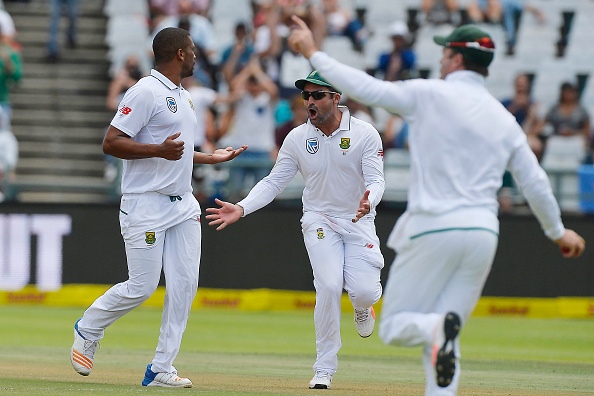South Africa showed character and class in recording an emphatic first Test victory at Newlands.
In the context of a low-scoring game, victory over the world’s No 1-ranked Test team by 72 runs inside three days of actual play was extremely impressive.
South Africa’s win was based on belief within the squad, positive mindsets and aggression. And it came on a Newlands pitch that was quicker and greener than we have seen in recent seasons and groundsman Evan Flint and his staff can take a bow. Although the match itself lasted 231 overs of actual play and saw 760 runs scored for the loss of 40 wickets – an average of 19 runs per wicket – this pitch wasn’t a minefield.
Vernon Philander deservedly received the most plaudits with a Man of the Match display of nine wickets and a career best 6-42 in the second innings as India crumbled in the face of chasing a 208 winning target. Even as they moved to 30-0 in that chase, the online bookies still made the home side odds-on favourites, which they did by taking 10 India wickets for 105 runs.
Philander was roundly criticised, even publicly by his own captain following last year’s 3-1 Test series defeat in England – a formline that looks even worse now that Australia thumped England 4-0 in their Ashes series – but he responded superbly to lead the attack and spark the victory.
Aggression won the day for South Africa and, with wickets falling in bunches, it was those with positive mindsets who succeeded, with both ball and bat.
Mention needs to be made of AB de Villiers. He came to the crease in the first innings with the score 7-2 after Faf du Plessis had won the toss and chosen to bat in conditions that were good for seam bowling, and it was soon 12-3. But one over in which he attacked a rampant Bhuvneshwar Kumar and took 17 runs off the over, was telling.
It was almost as if De Villiers had sized up the pitch and realised that it wasn’t one whereby any batsman was ever ‘in’ and there was always going to be a ball with your name on it. By being aggressive, he quickly started to help build South Africa’s competitive first innings total of 286. Quinton de Kock too, with a first-innings score of 43 off 57 balls, helped shape the destiny of the match.
De Villiers was at the crease again early on the fourth day as Hashim Amla failed with the bat for the second time and despite South Africa themselves collapsing from 65-2 to 130 all out, De Villiers was last man out, trying to clear the fence chasing runs. He added 35 to his first innings 65 to total 100 runs in the game, the only player to reach three figures.
Again, in the context of a low-scoring game, De Villiers’ 100 runs as a contribution were of vital importance and he also chipped in with two smart catches in the India second innings.
ALSO READ: Proteas took risks to win – Faf
Du Plessis again has to be applauded for the way he rotated his bowlers – especially being restricted by the absence of Dale Steyn for the second innings and India’s solid start to their low chase for victory.
There is a local view that Philander bowls at the Wynberg end or no end. The Wynberg end is where he has forged a career, both with the Cape Cobras and the Proteas, as one of the finest seam bowlers in the world, enjoying it when the south-easter blows from over his right shoulder. In the second innings, he picked up Murali Vijay from the Wynberg end but then for his next spell Du Plessis brought him on from the Kelvin Grove end.
Philander wouldn’t have been as comfortable from there but he picked up the key wickets of Virat Kohli (lbw) and Rohit Sharma (bowled), before Du Plessis again switched his bowlers and brought Philander back at the Wynberg end, where he took the last three wickets in four balls to finish the match dramatically.
South Africa had the worst of the batting conditions, batting first on a challenging Newlands pitch and then responding from being 12-3. In their second innings, they again had the worst of it on the morning of the fourth day, after the third day had been washed out without a ball bowled. The pitch was juicy and the clouds were overhead – probably the toughest time for batting in the match.
This was a brilliant victory and one that I had predicted to finish inside four days from day one, with South Africa being the winners. And it came even with a full day lost.
A sign of how aggressive and dominant South Africa were can be seen in the respective number of overs faced. In the match, South Africa faced 114.3 overs and scored 416 runs at 3.6 an over. India faced 116.2 overs and scored 344 runs at 2.9 an over.
Coach Ottis Gibson will be calling for more of the same when the next Test comes round.
Photo: Ashley Vlotman/Getty Images







